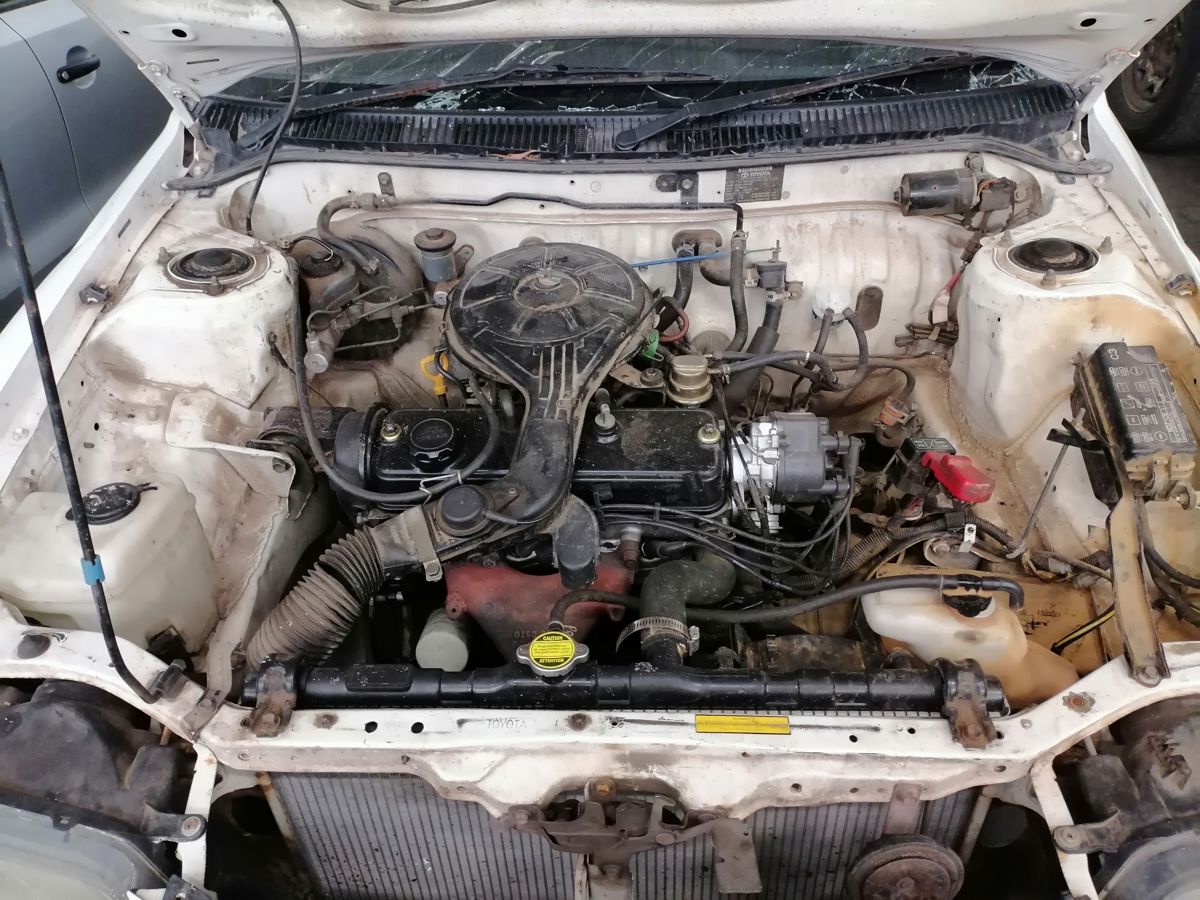Toyota Tazz: Why It Continues to Be a Trusted Vehicle for Daily Commuting
Toyota Tazz: Why It Continues to Be a Trusted Vehicle for Daily Commuting
Blog Article
Discover the Latest Patterns in Engine Innovation Via Tazz
In the swiftly evolving landscape of automobile innovation, Tazz stands at the leading edge, highlighting substantial innovations in engine systems that focus on both advancement and sustainability. tazz. From crossbreed engines that optimize gas performance to the appearance of hydrogen gas cells, the trends forming modern-day powertrains are not only improving performance however also dealing with essential ecological obstacles. As the sector remains to press borders, it is important to take into consideration exactly how these advancements will influence future transportation solutions and the broader effects for international power usage. What lies ahead in this pivotal transformation?
Crossbreed Engine Innovations
Hybrid engine technologies stand for a critical shift in auto modern technology, integrating the advantages of interior combustion engines with electrical propulsion systems. This assimilation not only enhances fuel efficiency however also minimizes emissions, conference increasingly strict ecological laws. By using both energy sources, hybrid engines can maximize performance, supplying power when needed while preserving fuel during much less demanding driving problems.
Recent improvements in hybrid innovation include enhancements in battery performance and regenerative braking systems. These advancements enable higher power recovery during slowdown, which can be rerouted to aid in acceleration or power auxiliary systems. Suppliers are concentrating on lightweight materials and small styles to optimize the performance of crossbreed powertrains.
The development of plug-in hybrids has likewise broadened the marketplace, allowing motorists to bill their lorries using basic electric outlets. This function commonly enables for substantial all-electric array, more lowering dependancy on traditional gas. tazz. As the automotive industry remains to evolve, hybrid engine technologies are expected to play a critical duty in linking the space between traditional cars and completely electric models, providing a transitional solution that accommodates varied customer requirements and preferences
Advancements in Electric Powertrains
The automotive landscape is swiftly advancing, with electrical powertrains becoming a leading force in sustainable transportation. Breakthroughs in electrical automobile (EV) technology are considerably enhancing efficiency, effectiveness, and individual experience. Key technologies include improvements in battery chemistry, which have actually boosted energy density, lowered billing times, and extended general battery life.
Solid-state batteries, for instance, assure to reinvent the marketplace by supplying greater security and effectiveness compared to traditional lithium-ion cells. Developments in regenerative stopping systems are making it possible for automobiles to recover energy throughout deceleration, contributing to overall effectiveness.
Along with battery technology, electrical motor designs are ending up being extra sophisticated. Advancements such as incorporated electric motors and advanced thermal administration systems are aiding to maximize power delivery and decrease weight, eventually boosting vehicle dynamics.

Collectively, these developments highlight the commitment to transition towards cleaner, more efficient transport remedies, placing electric powertrains at the leading edge of automobile development.
The Rise of Hydrogen Gas Cells
Increasingly, hydrogen fuel cells are obtaining grip as a feasible option to conventional internal burning engines and battery electric cars. This technology uses the chemical energy saved in hydrogen, transforming it into electricity via an electrochemical response with oxygen. The primary result of this procedure is water, making hydrogen navigate to this site fuel cells an eco-friendly choice with no emissions at the tailpipe.

Automakers are progressively you could check here purchasing hydrogen gas cell technology, recognizing its capacity for long-range applications and fast refueling capacities that rival conventional fuels. Furthermore, markets such as sturdy transportation and public transportation are specifically well-suited for hydrogen fuel cells, where battery electric services might fail as a result of weight and array constraints.
As research and investment remain to expand, hydrogen fuel cells are positioned to play a significant role in the future landscape of clean transport and power solutions.
Enhancements in Internal Combustion Engines
Developments in internal combustion engine (ICE) technology are changing traditional lorries to fulfill contemporary environmental criteria and performance assumptions. Straight fuel shot, for instance, enables for much better atomization of fuel, leading to even more complete burning and improved power result.
Furthermore, turbocharging has obtained importance, permitting smaller engines to deliver higher efficiency without the weight of larger engines - tazz. This technology not only boosts effectiveness but likewise contributes to decrease fuel intake. Variable valve timing systems are additionally being refined, making it possible for engines to adjust to numerous driving problems for enhanced torque and responsiveness
In addition, the usage of lightweight products in engine building is coming to be conventional, additional enhancing gas efficiency by decreasing overall automobile weight. Engine control units (ECUs) are significantly sophisticated, enabling real-time changes that optimize performance and emissions.
These enhancements jointly signify a critical change in ICE modern technology, aligning with worldwide sustainability objectives while still providing the performance motorists anticipate from their vehicles. As the industry progresses, these renovations continue to shape the future of conventional vehicle design.
Future Fads in Engine Efficiency
Significant improvements in engine performance are prepared for as manufacturers focus on integrating advanced innovations to fulfill rigorous ecological laws and customer needs. The change in the direction of electrification, crossbreed systems, and different gas is improving the auto landscape, driving technologies that boost gas economy and reduce emissions.
Among the key trends is the execution of innovative products and making strategies. Light-weight compounds and high-strength alloys add to decreased car weight, therefore improving overall efficiency. In addition, over here the fostering of turbocharging and variable valve timing technologies enables boosted power result from smaller sized engines, even more enhancing fuel economic situation.

Final Thought
Finally, the expedition of engine technology exposes significant improvements that focus on sustainability and effectiveness. Technologies in hybrid engine systems, electrical powertrains, and hydrogen fuel cells demonstrate a dedication to decreasing exhausts while enhancing performance. In addition, enhancements in inner combustion engines and a focus on light-weight products add to general engine efficiency. As the auto industry continues to progress, these fads will play an important duty in forming a cleaner and even more sustainable future for transportation.
From hybrid engines that optimize fuel efficiency to the development of hydrogen fuel cells, the patterns forming contemporary powertrains are not just boosting efficiency yet likewise addressing vital ecological difficulties.Crossbreed engine advancements stand for an essential shift in automobile innovation, integrating the benefits of internal combustion engines with electrical propulsion systems.In addition, turbocharging has actually gotten importance, allowing smaller sized engines to deliver higher efficiency without the weight of larger engines. In addition, the fostering of turbocharging and variable shutoff timing modern technologies enables for improved power result from smaller sized engines, even more improving gas economic situation.
Enhancements in internal combustion engines and a focus on light-weight products add to general engine efficiency.
Report this page